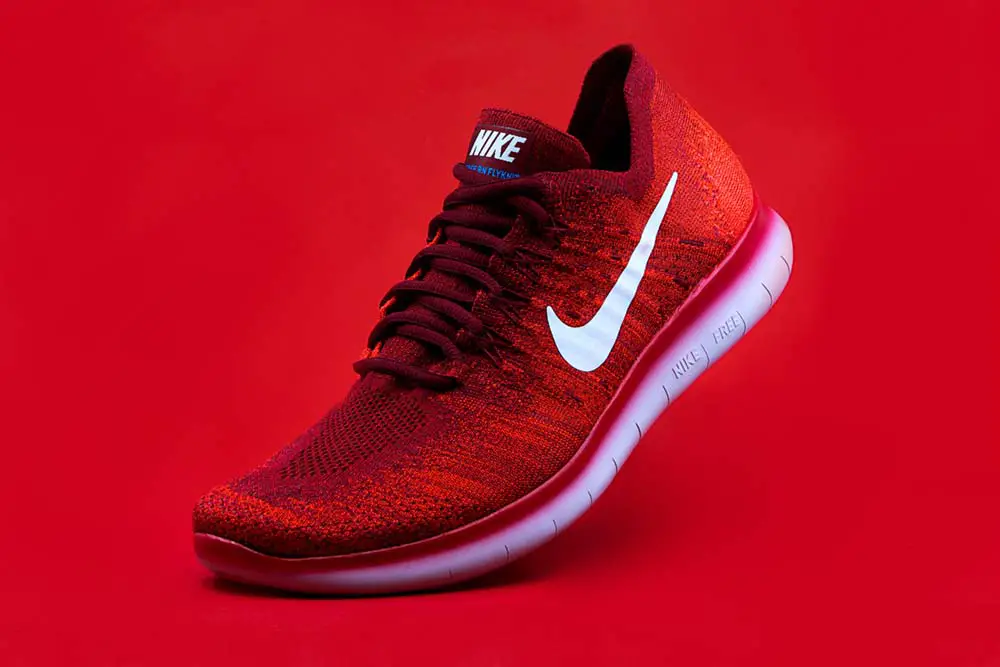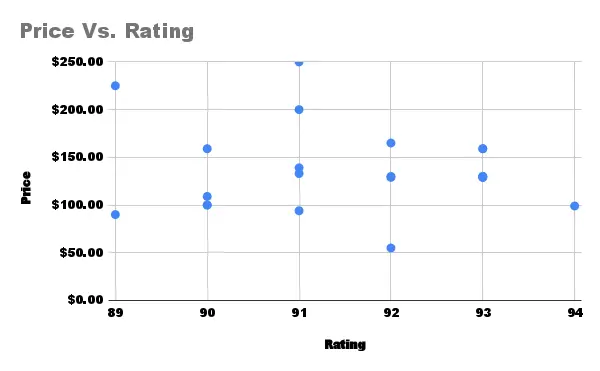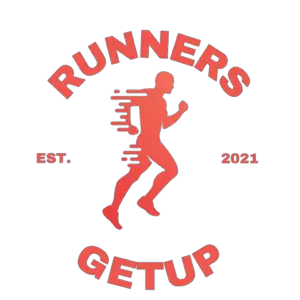This post contains affiliate links.

I was sitting on my couch when a friend called me for advice. He was going to buy running shoes and he wanted to know how much does a good pair of running shoe cost. I figured this was going to be a good topic to write about so I immediately went on to gather actual data so I can give him accurate recommendations.
On average, a good pair of running shoes cost around $132. Running shoes that cost upwards of $160 does not always correlate to a better rating and in some instances, shoes that cost less than $100 are rated just as good as the higher-priced shoes.
Ahead, we’re going to look at actual data on how I came up with that number. We will also look at why expensive running shoes aren’t actually worth it. At the end of this article, I will give you shoe recommendations based on the findings that will get you satisfied with your purchase. So stick along cause this article is packed with useful information.
The Average Price of a Good Running Shoe
So, you might be wondering how I got to that number and what data I used to back that up. Well, instead of looking at my current shoes and giving you a subjective recommendation based on the price of my shoes, I looked at the prices of the highest-rated shoes in the market.
To get the average price of a good running shoe, I’ve compiled a list of the highest-rated running shoes from Runrepeat.com across three categories: daily trainers, speed training shoes, and competition shoes.
Then, I got their respective prices on Amazon and took the average price of each category.
Daily Trainers
| Shoe Model | Rating | Price |
|---|---|---|
| Reebok Floatride Energy 3 | 94 | $99 |
| Brooks Adrenaline GTS 21 | 93 | $129 |
| Nike ZoomX Invincible run | 93 | $120 |
| Brooks Ghost 14 | 93 | $129 |
| Hoka One One Mach 4 | 93 | $130 |
| Saucony Ride 14 | 92 | $130 |
| Brooks Revel 5 | 93 | $100 |
| ASICS Gel Cumulus 22 | 92 | $119 |
| UA HOVR Sonic 3 | 92 | $95 |
| Saucony Hurricane 23 | 92 | $152 |
In the table above, I listed 10 of the highest-rated running shoes in the daily trainer category. Daily trainers are running shoes used for… you guessed it, daily training.
The common feature of a daily trainer is cushioning and comfort. Elite athletes use daily trainers to stack up miles at an easy to moderate pace. This type of shoe is also the best for beginners.
The price of a good daily trainer ranges from $95 to $152 and has an average price of $123.40. This means that a good pair of daily trainers have an average price of around $120.
Speed Trainers
| Shoe Model | Rating | Price |
|---|---|---|
| Saucony Endorphin Speed | 93 | $159 |
| Hoka One One Mach 4 | 93 | $130 |
| Skechers Go Run Fast-Valor | 92 | $55 |
| Adidas Adizero Boost 8 | 89 | $90 |
| Saucony Kinvara 12 | 90 | $109 |
| New Balance Fuelcell Propel | 91 | $80 |
| Brooks launch 8 | 91 | $100 |
| ASICS Gel Nimbus Lite 2 | 91 | $149 |
| Brooks Revel 3 | 91 | $94 |
| Hoka One One Rincon 2 | 90 | $159 |
Speed training shoes are a type of running shoes that are lighter than daily trainers but are less cushioned and less comfortable. They are meant to be fast and used for only short distances.
Workouts like tempo runs, high-intensity interval training, and sprints require this type of shoes.
The price of a speed trainer ranges from $55 to $159 and has an average price of $113.
That means if you’re looking for a good running shoe to use for sprints and short distance tempo runs, you can find a good shoe for a lesser price than daily trainers.
Competition Shoes
| Shoe Model | Ratings | Price |
|---|---|---|
| Saucony Endorphin Speed | 93 | $159 |
| Saucony Endorphin Pro | 92 | $165 |
| ASICS Noosa Tri 13 | 92 | $129 |
| Puma Deviate Nitro Elite | 91 | $200 |
| Nike Air Zoom Alphafly Next % | 91 | $250 |
| Altra Escalante Racer | 91 | $139 |
| ASICS Gel Noosa Tri 11 | 91 | $133 |
| New Balance 1400 V6 | 90 | $100 |
| Adidas Adizero Adios 4 | 90 | $100 |
| Adidas Fuelcell Elite V2 | 89 | $225 |
Lastly, competition shoes are a type of running shoes that are used for races. This type of shoes are typically light and are equipped with some kind of special midsole technology that allows you to run faster and longer.
The main concern about this type of shoe is that it’s usually expensive and has a short lifespan. That is why elite athletes build out their running shoe rotation and use their competition shoes only for races.
A competition shoe ranges from $100 to as high as $250 with an average price of $160. That means you’re going to have to spend a steep price for a faster shoe that you won’t use as often.
On that note, I highly recommend staying out of competition shoes until you’re actually competing and trying to rank on races.
If you’re a beginner, get yourself a good pair of daily trainers like a Brooks Ghost 14 as your first shoe. That way, you can use it for a lot of runs, it’s comfortable and it’s usually the most durable out of all three categories.
So, back to $132. Well, that’s the average price of the highest-rated running shoes in my data.
All this means that if you’re like most people who use price as a determining factor of shoe quality (which is a wrong way to judge quality, by the way), your best bet to get the value for your money is to get a shoe that costs around $132.
Why Expensive Running Shoes Aren’t Worth It (It Won’t Make You Satisfied)
“So all that marketing from popular sports brands was a lie?”, this was my immediate response after I saw my own data.
As a general rule, expensive running shoes do not always mean better shoes. Some of them have a lower rating than their cheaper counterpart. The price of the running shoes does not correlate with their ratings. The best value tends to be the averagely-priced shoe.
I created a scatter chart comparing the price with the ratings of 40 running shoes. What I found was that some shoes priced between $150 and $250 are rated less or the same as some of the shoes priced below $100.

A similar study was done by Runrepeat.com on a bigger scale. They gathered more than 130,000 customer reviews across 400 running shoes and compared the price with its rating. What they found was mindblowing.
Their data suggests that more expensive shoes gathered less customer satisfaction compared to affordable ones.
Therefore, if you like to buy a running shoe that will satisfy you as a buyer, buying more affordable running shoes is your best bet.
But be careful with choosing the cheapest option. Frankly, this data does not show that more expensive shoes perform poorer than more affordable ones (performance is different from customer ratings). The reason behind the low rating of expensive running and the high ratings of a cheap one could be a matter of mismatched expectations.
Customers that have paid a premium for a running shoe must’ve expected something way beyond the limits of shoe technologies. Therefore, they might’ve given a lower rating to more expensive running shoes because it doesn’t feel like what they’ve expected.
In contrast, more affordable shoes could’ve easily exceeded the expectations of customers because they paid very little for them. So it could’ve gotten a high rating even though it performed equal or even poorer than more expensive ones because “it’s better than what I expected” — what my friend use to say.
That’s the reason why I recommend buying a running shoe that is close to the average price of $132. This is to make sure that you don’t buy a cheap running shoe that’s got its rating just because it exceeded the expectation of someone who paid very little, and it’s not that expensive that it will drive down your product satisfaction.
Buy a shoe close to $132 to make sure you get an accurately rated running shoe.
Runners Getup
On a side note: I’m an overpronated runner. A shoe that I use and recommend is the Brooks Adrenaline 21. I have been using this shoe for nearly all my runs and I feel very comfortable with it. You can check its current price on Amazon.
Some Cheap Shoes Are Just As Good
Going back to my study, some shoes that are priced below $100 are rated just as good or even better than more expensive ones (see scatter chart).
Take Reebok Floatride Energy 3.0 for example. It has a rating of 94 but is priced at only $99. That’s a great value for the price.
In contrast, Saucony Hurricane 23 has a rating of 92 (which is still great) but has a price tag of around $150.
In choosing a running shoe, it’s important that you find a shoe that matches your feet and the activity you intend to do. It’s best if you ask your local running shoe specialty store for advice on which shoe to get.
If you don’t have access to a specialist, you can read this article about choosing the right running shoe.
Buying Tips To Get The Most Out Of Your Running Shoe Purchase
In case you’re on a tight budget and want to spend less than the average price for a good running shoe, there are a few things you can do to make sure you get the value from your money.
1. Buy an older model of a highly-rated shoe
Running shoe companies make various “improvements” to their running shoe models. But those improvements do not always result in an improved shoe. What that improvement does is depreciate the cost of buying the previous iteration while the newer version gets the SRP of that shoe model.
The good news for most buyers is: more often than not, they feel exactly the same or at times, even worst than their former iteration. As a matter of fact, the highest-rated category of most specialty running stores online has quite a lot of older models in the list.
That means you’ll be able to spend less on a highly-rated running shoe.
2. Buy a daily trainer if you’re a beginner to intermediate runner
Daily trainers are soft, comfortable, and usually the most durable type of running shoes in the market.
Light shoes and competition shoes often cut back on materials to make the shoe lighter and faster. And some of the good ones often have higher price tags.
Well, fast shoes are good if you’re competing or you are serious about getting fast, but if you’re a regular runner who just wants to get a good workout (like most people are), you’re doing yourself a favor by getting a daily trainer.
3. Buy at least two pairs of shoes and rotate them
This might be counterintuitive but building a running shoe rotation actually increases the lifespan of both shoes.
Don’t freak out just yet. Not everyone has to do this. For someone who runs 2-3 times a week, one good running shoe is fine. But if you’re running every day, consider buying a second pair of shoes that you can rotate.
If you’re interested in building one, I highly recommend reading my article on running shoe rotation. I’ve included everything you have to know about building up your running shoe rotation along with some shoe recommendations to make that article as helpful as possible.
Key Takeaways
For you to get the most out of this article, I’ve listed the key takeaways in a list format so you know exactly how to decide on buying your running shoes.
- Expensive shoes aren’t always better. In fact, expensive shoes can make you less satisfied.
- Very cheap shoes could’ve gotten their rating because they exceeded the expectation of someone who paid verry little.
- It’s best to buy a shoe close to $132 (the average price of the highest-ranked shoes)
- Find a shoe that matches the activity that you intend to do (easy pace, speed training or competition)
Depending on what type of run you’re going to do, here are the running shoes that I recommend with links to where you can buy these shoes.
- Daily training: Brooks Ghost 14 or Brooks Adrenaline GTS 21 (for overpronated runners)
- Speed training: Saucony Kinvara 12
- Competition: Saucony Endorphin Speed 2
